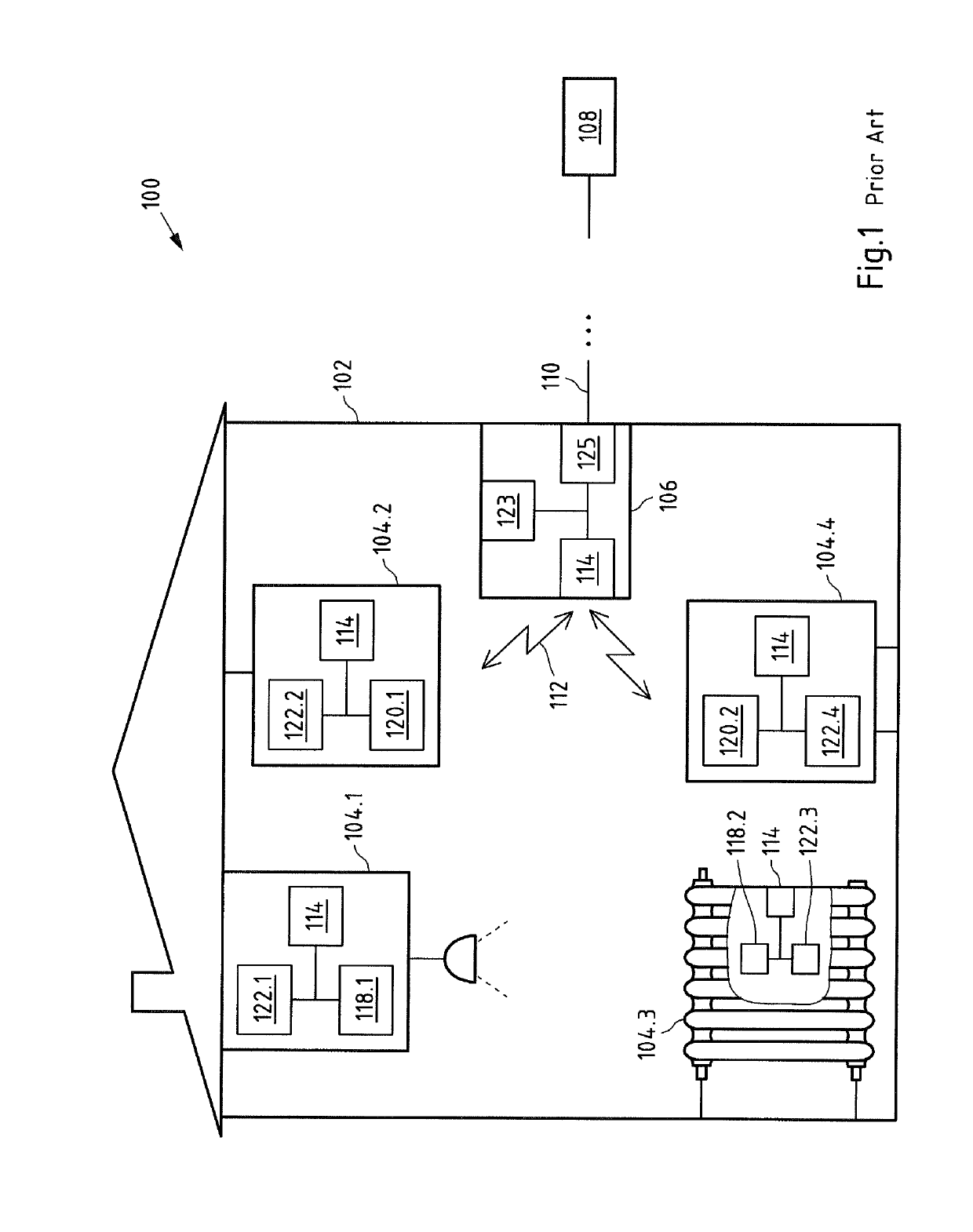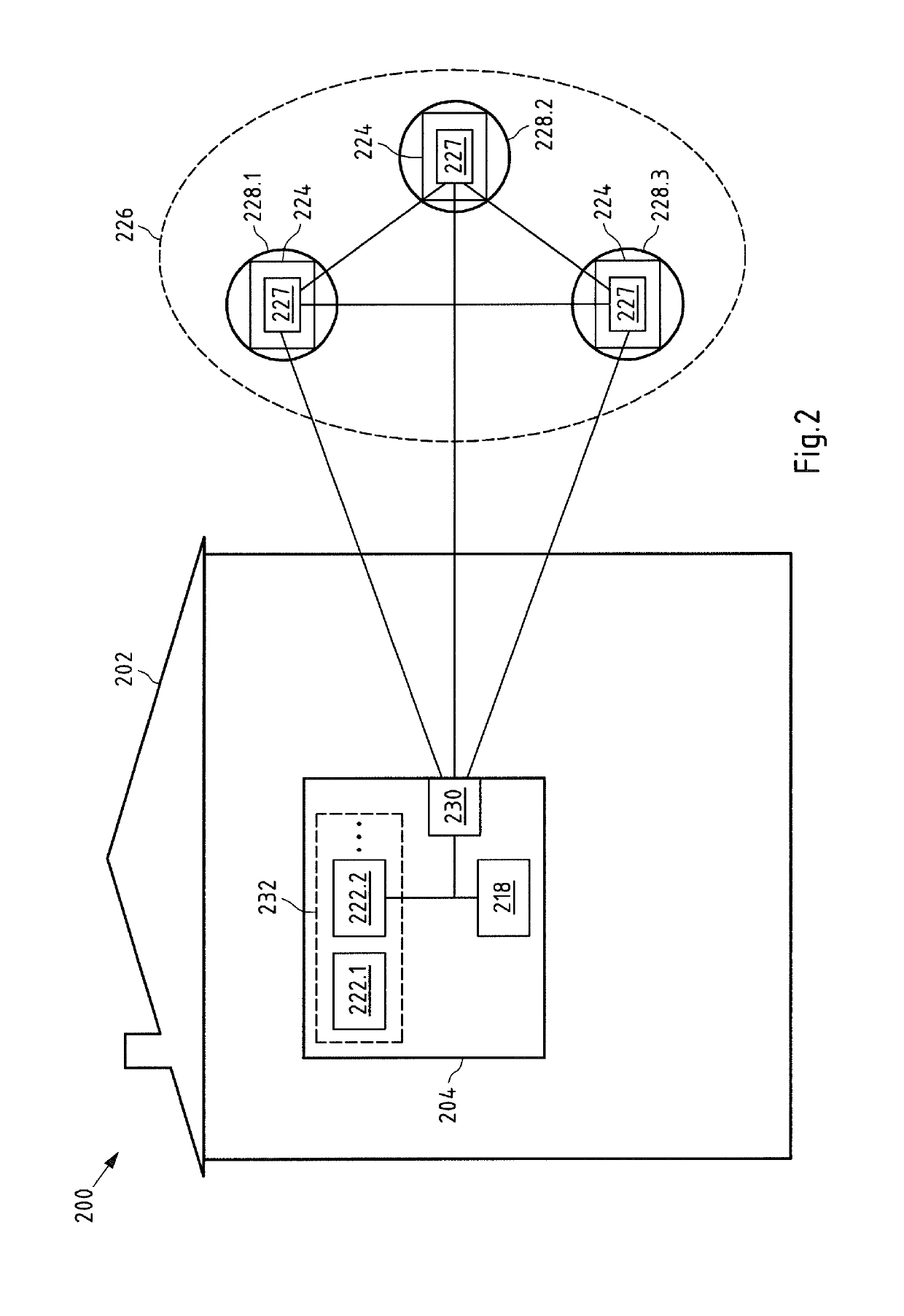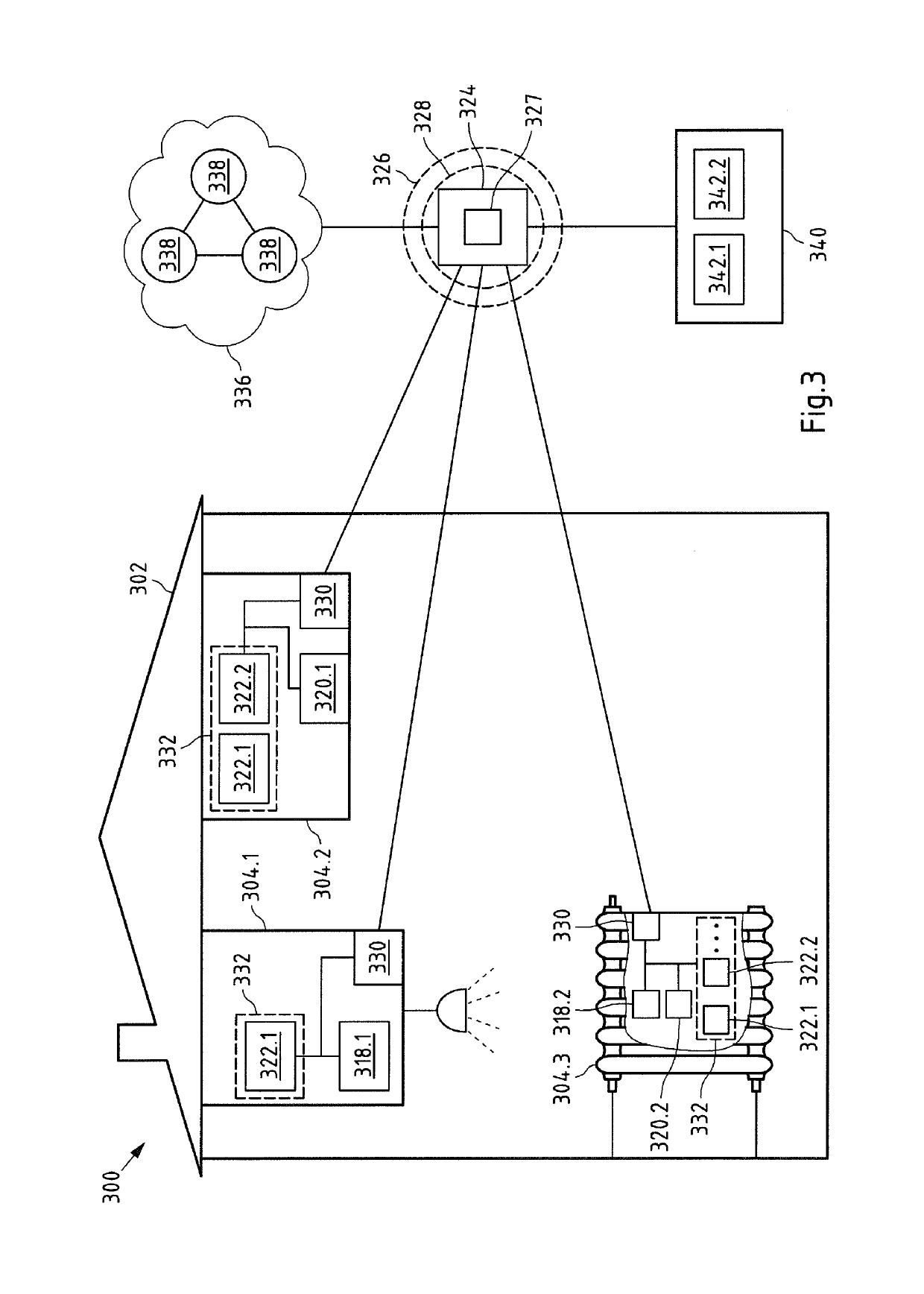Building automation system
a technology for building automation and building automation, applied in the field of building automation systems, can solve the problems of inability to implement a further function, the server-client structure of these systems, and the inability to manage confidential data on the instance or central server
- Summary
- Abstract
- Description
- Claims
- Application Information
AI Technical Summary
Benefits of technology
Problems solved by technology
Method used
Image
Examples
Embodiment Construction
[0110]Like reference numerals in different figures indicate like elements.
[0111]FIG. 2 shows a schematic view of an embodiment of a building automation system 200 according to the present invention. The building automation system 200 comprises a building entity 202 in form of a building 202. In the present example, the building automation system 200 comprises only one appliance device 204. It shall be understood that a building automation system may comprise a plurality of appliance devices.
[0112]The depicted appliance device 204 comprises an actor218. It shall be understood that an appliance device can comprise two or more actors and / or one or more sensors. In the present example, the actor 218 is connected with a rewritable storage unit 232. The storage unit 232 is configured such that function modules 222.1, 222.2 can be stored, changed and / or deleted after the manufacturing of the appliance device 204.
[0113]The rewritable storage unit 232 comprises a first function module 222.1 ...
PUM
 Login to View More
Login to View More Abstract
Description
Claims
Application Information
 Login to View More
Login to View More - R&D
- Intellectual Property
- Life Sciences
- Materials
- Tech Scout
- Unparalleled Data Quality
- Higher Quality Content
- 60% Fewer Hallucinations
Browse by: Latest US Patents, China's latest patents, Technical Efficacy Thesaurus, Application Domain, Technology Topic, Popular Technical Reports.
© 2025 PatSnap. All rights reserved.Legal|Privacy policy|Modern Slavery Act Transparency Statement|Sitemap|About US| Contact US: help@patsnap.com



